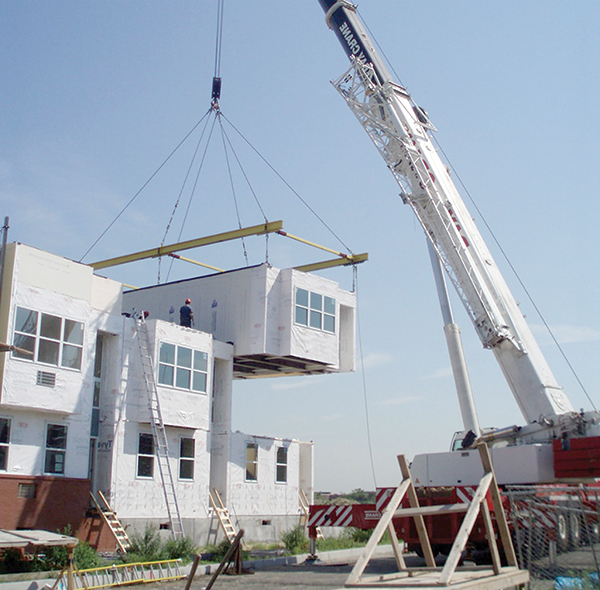

Uncertain if IBS can reduce housing cost
Published on: Monday, June 17, 2019
Text Size:

This is mainly due to the perception that construction cost is a major barrier towards de-scale provision of affordable housing hence, the reduction of construction cost will enable properties to be built with lower cost, thereby leading to a lower selling price.
However, there is still an uncertainty if IBS can really reduce the cost of construction. In the Malaysian construction industry, there is a common perception that the use of IBS will result in an additional 10pc construction cost to its high capital investment on skilled labour, heavy equipment and mechanised construction facilities. As such, one can hardly conclude that advanced construction methods can bring down selling price.
Housing development costs comprise construction cost, land cost, soft cost (referred to as professional fees), compliance cost and to financial charges. Common distribution of these costs are 50pc, 20pc, 10pc, 8pc, and 2pc of the total development cost, respectively.
In terms of construction costs, it is further s divided into building cost (70pc), infrastructure cost (20pc), and preliminaries and contingencies 1 (10pc). Building cost alone can be further sub-divided into superstructure (50pc), substructure (15pc), architecture and finishes (20pc), and M&E services (15pc).
IBS mainly affects the cost of structural and wall element of a building. If structures and walls (superstructure) make up only half of the total building cost, while building cost contributes to 70pc of the total construction cost, which is about half of the selling price; then, an IBS method of construction has influence on only 17.5pc of the selling price of a house.
In this case, if the adoption of IBS is said to reduce 10pc of the cost of structure and walls, the equivalent saving is about 1.75pc of the selling price, which is not as impactful in reducing the cost barrier to affordable housing.
This can be better illustrated with the following simulation (Figure 1). Let’s assume 400 units of 900sq ft average standard apartment with the selling price of RM300,000 per unit are to be constructed on five acres of land, with land ii price of RM130 per sq ft, which is subject to the density of 80 units per acre. As one can observe, the building cost in this case makes up 77pc of the total construction cost, which is 49pc of the total selling price.
Again, if IBS is used for the construction of C superstructure, which consists of 46pc the total T building cost (while the remaining building cost is shared by substructure, M&F, and architecture it and finishes), the equivalent cost of IBS components is 22.5pc of the total unit selling price. Consequently, a 10pc cost reduction brought by the adoption of IBS - due to the advantage of standardisation and repetition will only reflect a saving of 2.25pc in the selling price.
IBS construction is also costlier than conventional cast in-situ in terms of material.
This is proven by comparing the build-up rate of constructing one sqm precast concrete slab and one sqm reinforced in-situ grade 35 slab. As one can observe, IBS construction does construction does reduce labour cost by as much as 47pc.
However, due to the higher cost of material, the total cost of constructing one sqm precast concrete slab is much higher than one sqm reinforced in-situ grade 35 slab, resulting in an additional cost of 5.28pc. Considering that labour cost only constitutes 14pc (at maximum) of the total cost of one sqm cast in-situ slab there is little incentive for builders in the country to adopt IBS.
IBS may even lead to higher cost of construction if it does not fit in properly with the existing construction ecosystem.
This can be better illustrated by comparing the basic prices of two common construction items: labour rate (USD/day) and concrete cost (USD/m3) among countries (29 selected global economies). Labour rates in developed economies tend to be significantly higher than those in developing countries. Malaysia has routinely engaged a large number of construction workers from Indonesia and Bangladesh to support the local construction industry as the local labour force was reluctant to work in the industry.
When these basic prices are presented as a ratio (1m3 concrete/one day construction labor wages), it is apparent that 1m3 concrete is worth 2.29 days wages in Malaysia (an upper-middle income country), as compared to 0.82 days wages in Singapore (a high income country). For a lower-middle income country like Vietnam, the ratio is even higher at 3.56.
Conclusion
The lower labour cost in developing countries motivates builders to adopt more labour-intensive processes and to economise on concrete materials in their construction. The higher wage costs in developed countries, on the other hand, will motivate builders to reduce their dependence on labour by adopting standard concrete element sizes (IBS components) even though these result in a greater quantity of concrete.
Supposedly, advanced construction Methods can help lower construction cost, leading to a more affordable housing product in the market. However, by plotting house prices (11SD/m2) against the inverse of concrete/labour ratios - which is treated as a proxy of construction technology level of a country - one may find that higher construction technology may not necessarily lead to lower house prices. Except for outliner like Hong Kong, the higher the level of construction technology - indicated by the bigger value of the inverse of concrete/labour ratios — the higher the house prices are.
l This article was contributed by Arkitek M Ghazali principal Ar. Mazlin Ghazali and MKH Bhd manager of product research & development Dr Foo Chee Hung – Courtesy of theSun Property.






